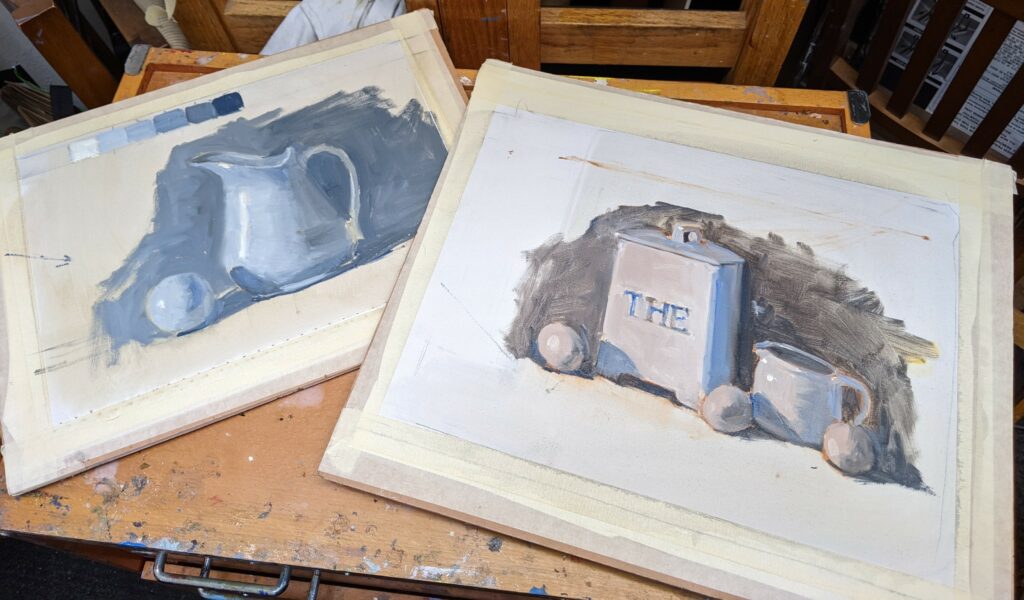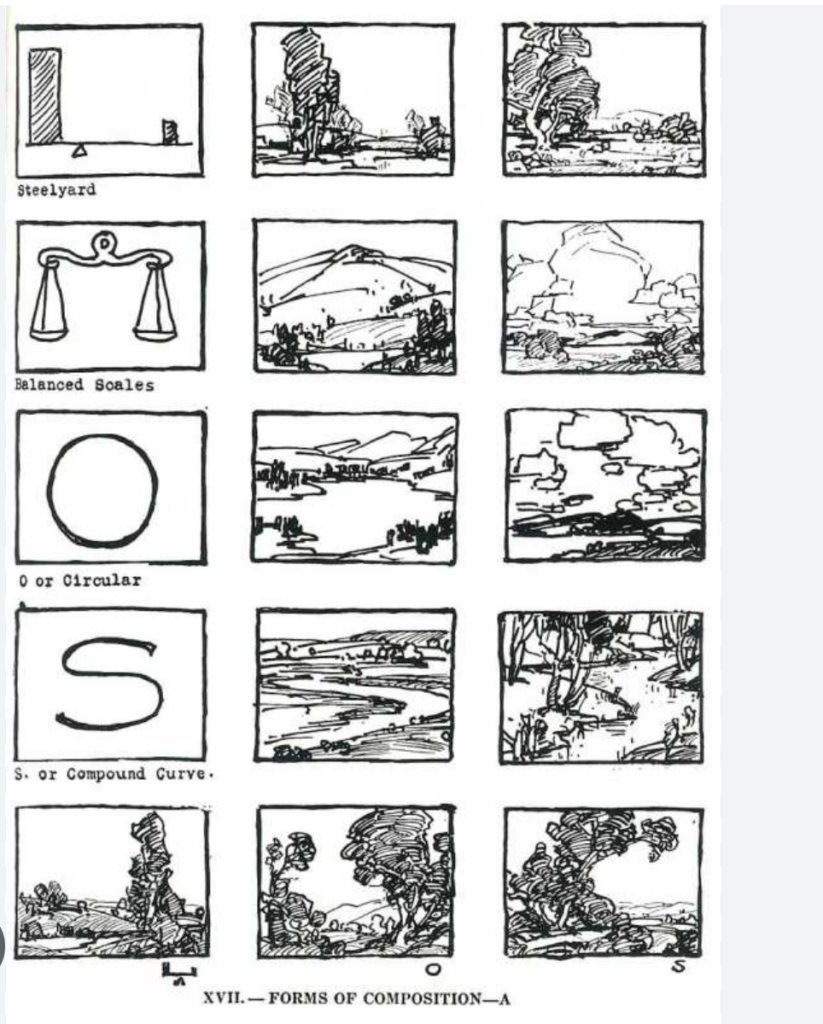Twenty-seven years ago I responded to a classified ad for instructing art for the Carmel (CA) Adult School. I was doing freelance graphic design, illustration, sign work and any other art-related work to get by. The only experience I had in teaching was my former career as a golf professional. Low and behold I got hired. I felt I had to know what I was talking about so I proceeded to educate myself by reading every art instruction book I could get my hands on. I taught adult art classes for various institutions for the next 12 years until I could make ends meet by selling my paintings and teaching my own private and group lessons. My method for instructing was to do a demo and articulate verbally my approach to specific fundamentals of painting for every class. My skills vastly improved and my students didn’t seem to mind. In fact they said they learned a lot from the demos.
In return, I learned about my students and teaching. Most people don’t realize what it takes to make a painting or drawing look effortless. Like learning to play a musical instrument or hitting a golf ball it requires learning the fundamentals and lots of practice.
Drawing & Composition

“Drawing is the probity of art. To draw does not mean simply to reproduce contours; drawing does not consist merely of line: drawing is also expression, the inner form, the plane, the modeling. See what remains after that.” – Jean-Auguste-Dominique Ingres
Without some knowledge of proportion, perspective and other drawing fundamentals teaching a student to paint can be challenging. Beginning painters just want to jump right into piles of color. I usually recommend starting off with still life subject matter with simple shapes and a limited palette. Sketching the human figure is the best way to improve drawing skills. I know a student is serious when I see the person at figure drawing sessions.

Recommended reading for students, Drawing on the Right Side of the Brain® 1979 (revised and reprinted in 1989, 1999, and 2012), Penguin Putnam By Betty Edwards
As far as composition goes, I stress to students what not to do instead of hard and fast rules. It is not uncommon to see the masters occasionally break so called rules of composition.

The Composition of Outdoor Painting, by Edgar Payne – The text is a bit wordy, but the thumbnail illustrations are a good starting point.

“Composition and the ability to structure your work on a flat surface takes time and practice to learn and understand.” From a book review by Dennis Babbit
Values
I recently picked up paintings from a show I had at a local tasting room. The next show, a local plein air art club, was on display. As I walked around and looked at the paintings, I was struck by the fact that overall, the most room for improvement would be in the values. Values do the work, color seems to get more attention. Novice students seem to obsess over color.
“Let me put in the darks and the janitor can put the lights in” Charles Movalli OPAM
A common fault is breaking up the dark shapes with too many values. The lightest values in the dark shapes should not be lighter than the darkest values in the light shapes.
Recommended reading for landscape painting and how planes (surfaces) reflect light: Carlson’s Guide to Landscape Painting by John F. Carlson.
Color
In college we were required to use gouache or casein mediums in class. When I was freelancing I used water based mediums for illustration and design jobs. I started off with watercolor for fine art paintings. When I got interested in plein air painting I found watercolor to be temperamental to weather conditions, so I experimented with oils. I found painting in oils challenging, especially with the color aspect. So many more options and mixing of tones! Doing color charts was not giving me the understanding I needed until I grasped the concept of color temperature. I had to literally see it to really wrap my head around it. Once I got it, it became my basis for explaining color theory in my teaching. Warm/cool color relationships render how light plays on objects, rendering volume and atmosphere (perspective).

9” x 12″ collection of artist
Edges – where one surface meets another in a painting
“Each time we touch a brush to canvas we create edges. It is the character of those edges – the gradual or abrupt way they merge with other strokes- that makes all the difference.” Richard Schmid, Alla Prima II

30” x 48” private collection
This aspect of painting is probably the most sophisticated quality in painting and the one of the most essential to the emotion of any painting. The manipulation of the edges dictates the eye flow of viewer, expression of the artist and individual style.
Alla Prima by Richard Schmid is one of the most comprehensive books on painting fundamentals I’ve read. I recommend it to all students of representational painting.
The Most Beneficial Thing I’ve Learned From Teaching
I don’t teach a style for representational painting, I try to stick to above fundamentals and believe a style will emerge with each individual student (if they stick to it). When I am at the easel I’m concentrating on the above fundaments, not the style. This is the most important thing I’ve learned from teaching.

collection of artist